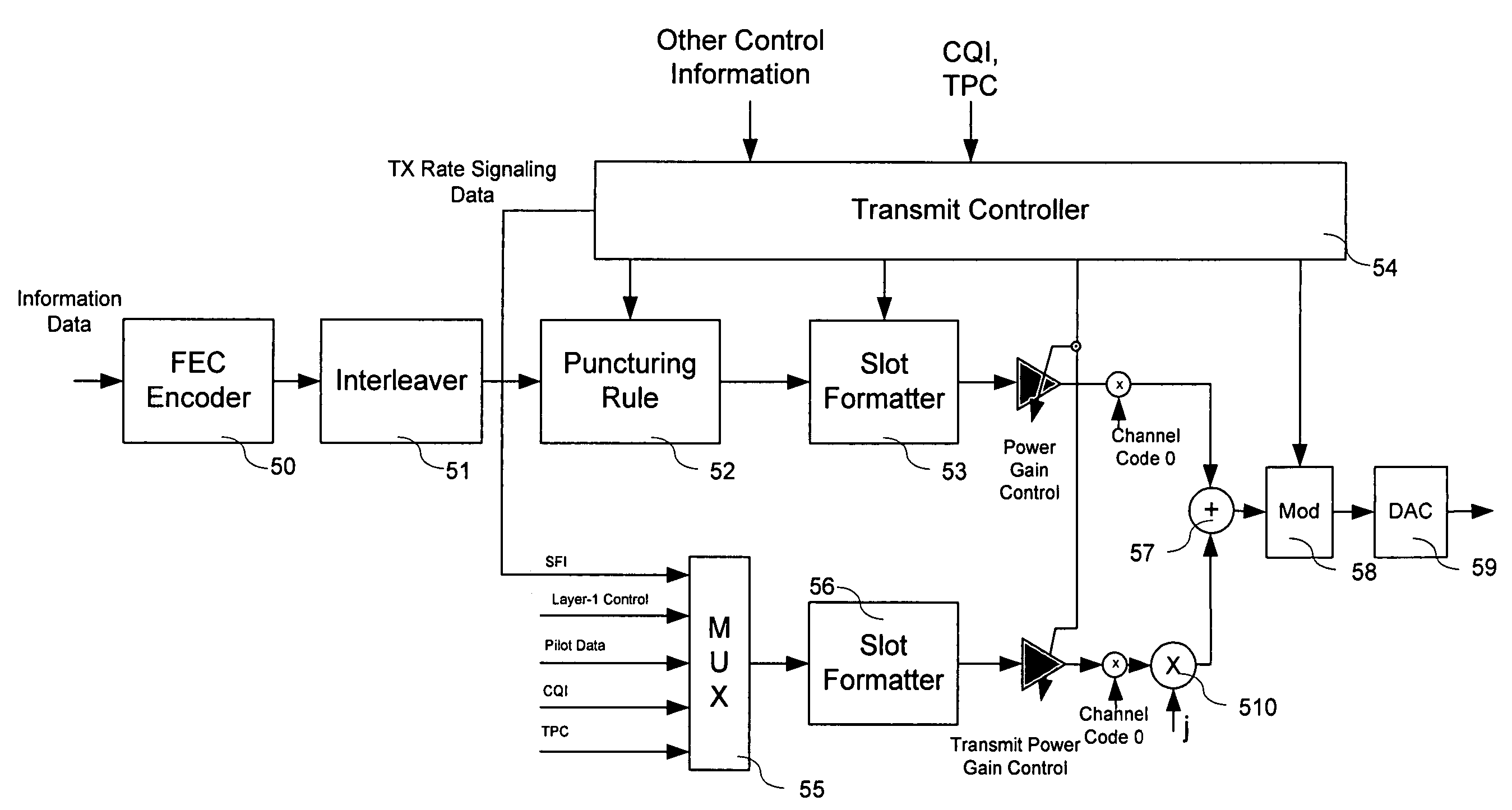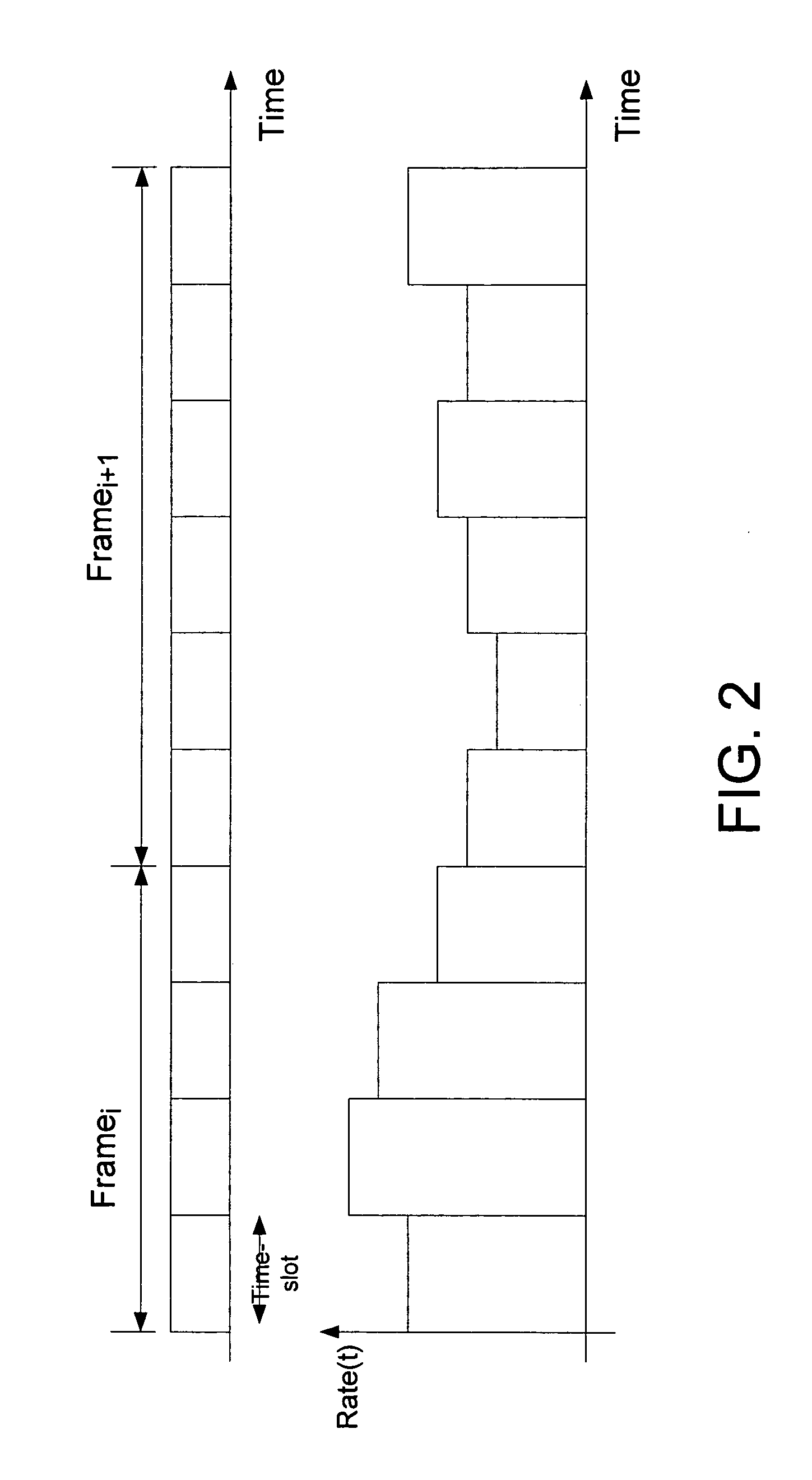Adaptive transmission rate communication system
a transmission rate and communication system technology, applied in the field of communication methods, can solve the problems of reducing the frame duration, reducing the time diversity of bits in the frame, and fading of the whole fram
- Summary
- Abstract
- Description
- Claims
- Application Information
AI Technical Summary
Benefits of technology
Problems solved by technology
Method used
Image
Examples
Embodiment Construction
[0015] In FIG. 1, an architectural environment over which the Remote Station or User Equipment (UE) 13, the Base Nodes (NodeBs) 10, 11, 12, and Network controllers 14, 15 could be operating is defined. The disclosed method is applicable for any link where the amount of transmitted energy per transmitted bit for a given grade of service needs to be minimized. The architecture depicted in FIG. 1 is normally used in current wireless cellular systems. The UE is connected to one or more NodeBs 10, 11, 12 through a wireless interface. In the disclosed method, the preferred air-interface is that of DS-SS. Other air-interfaces such as those of TDMA, FDMA, OFDM, OFDMA etc are also applicable by varying the transmission rate based on transmission methods applicable to them. Each NodeB is connected to a Radio Network Controller (RNC) and the RNCs are connected together and to other networks like a High Speed Backbone Network. The RNCs provide management, control and transport to NodeBs which i...
PUM
 Login to View More
Login to View More Abstract
Description
Claims
Application Information
 Login to View More
Login to View More - R&D
- Intellectual Property
- Life Sciences
- Materials
- Tech Scout
- Unparalleled Data Quality
- Higher Quality Content
- 60% Fewer Hallucinations
Browse by: Latest US Patents, China's latest patents, Technical Efficacy Thesaurus, Application Domain, Technology Topic, Popular Technical Reports.
© 2025 PatSnap. All rights reserved.Legal|Privacy policy|Modern Slavery Act Transparency Statement|Sitemap|About US| Contact US: help@patsnap.com



